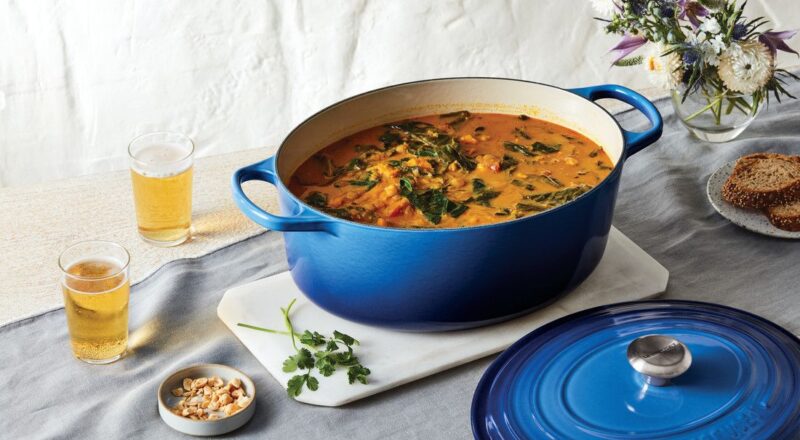When it comes to versatile cooking tools, the cast iron braiser and the wok are two popular choices among both professional chefs and home cooks. Each has its unique strengths and purposes, making them valuable additions to any kitchen. In this article, we will explore the differences between a cast iron braiser and a wok, helping you decide which one might be the best fit for your culinary needs.

Understanding the Basics
What is a Cast Iron Braiser?
A cast iron braiser is a versatile cooking vessel that combines the functions of a skillet and a Dutch oven. It features a wide, shallow base and a tight-fitting lid. This design makes it perfect for searing, browning, and slow-cooking meats and vegetables. The heavy-duty construction ensures even heat distribution, while the lid helps retain moisture, resulting in tender and flavorful dishes.
What is a Wok?
A wok is a traditional Asian cooking pan with a distinctive round bottom. It is known for its high sides, which allow for quick and even heat distribution. Typically made from carbon steel or cast iron, woks are ideal for stir-frying, deep-frying, and steaming. The shape of the wok enables food to be tossed and stirred easily, making it a staple in Asian cuisine.
Comparing Cooking Techniques
Searing and Browning
If you love a good sear on your meats or a golden brown crust on your vegetables, the cast iron braiser is your go-to tool. Its heavy bottom retains heat exceptionally well, allowing for perfect browning. The wok, on the other hand, can also achieve a good sear, but it requires more technique and skill due to its curved shape.
Stir-Frying and Quick Cooking
For quick and high-heat cooking, the wok is unparalleled. Its shape allows for rapid heat distribution, making it perfect for stir-frying vegetables and meats. The high sides prevent food from spilling over while tossing and stirring. While a braiser can handle stir-frying, it doesn’t match the wok’s efficiency for this cooking method.
Versatility and Usage
Multi-Functionality of the Braiser
The cast iron braiser is a jack-of-all-trades in the kitchen. It excels in braising, roasting, and baking. You can use it to make stews, casseroles, and even bread. Its ability to go from stovetop to oven expands its versatility, making it a reliable tool for a wide range of recipes.
Specialized Cooking with the Wok
While the wok is primarily associated with Asian cuisine, its capabilities extend beyond stir-frying. It’s excellent for steaming, deep-frying, and even smoking. The wok’s design encourages creativity in the kitchen, allowing for a diverse range of cooking styles.
Maintenance and Care
Caring for Your Cast Iron Braiser
Proper maintenance of a cast iron braiser is essential to ensure its longevity. Regular seasoning helps maintain its non-stick surface, and gentle cleaning methods prevent rusting. For more detailed care tips, you can visit this braiser care guide.
Maintaining Your Wok
Maintaining a wok involves seasoning it regularly to build up a non-stick layer. Proper cleaning ensures its longevity. To learn more about the intricacies of wok care, you might refer to this detailed guide.
Pros and Cons
Advantages of a Cast Iron Braiser
- Excellent heat retention
- Versatile for various cooking methods
- Durable and long-lasting
Drawbacks of a Cast Iron Braiser
- Heavy and cumbersome
- Requires regular maintenance
Benefits of a Wok
- Quick and even heat distribution
- Ideal for stir-frying
- Lightweight and easy to handle
Cons of a Wok
- Requires seasoning
- Not as versatile as a braiser
Which Should You Choose?
Your choice between a cast iron braiser vs wok depends on your cooking style and needs. If you enjoy slow-cooked meals and a variety of cooking methods, the braiser is a fantastic choice. However, if you prefer quick, high-heat cooking and love Asian cuisine, the wok might be more suitable.
Conclusion
Both the cast iron braiser and the wok are valuable kitchen tools, each offering unique benefits. Understanding their differences can help you make an informed decision based on your culinary preferences. Whether you are searing a roast or whipping up a quick stir-fry, having the right tool can elevate your cooking experience.

FAQs
Can you use a braiser for frying?
Yes, a cast iron braiser can be used for shallow frying, but it might not be as efficient as a wok for deep frying due to its shallow depth.
What is the best material for a wok?
Carbon steel is the most popular material for a wok because of its excellent heat conduction and lightweight nature.
How do you clean a cast iron braiser?
To clean a cast iron braiser, use a soft brush and mild soap. Avoid soaking it in water for long periods, and ensure it is thoroughly dried to prevent rusting. For more detailed instructions, check out this care guide.
This article contains affiliate links. We may earn a commission at no extra cost to you.

